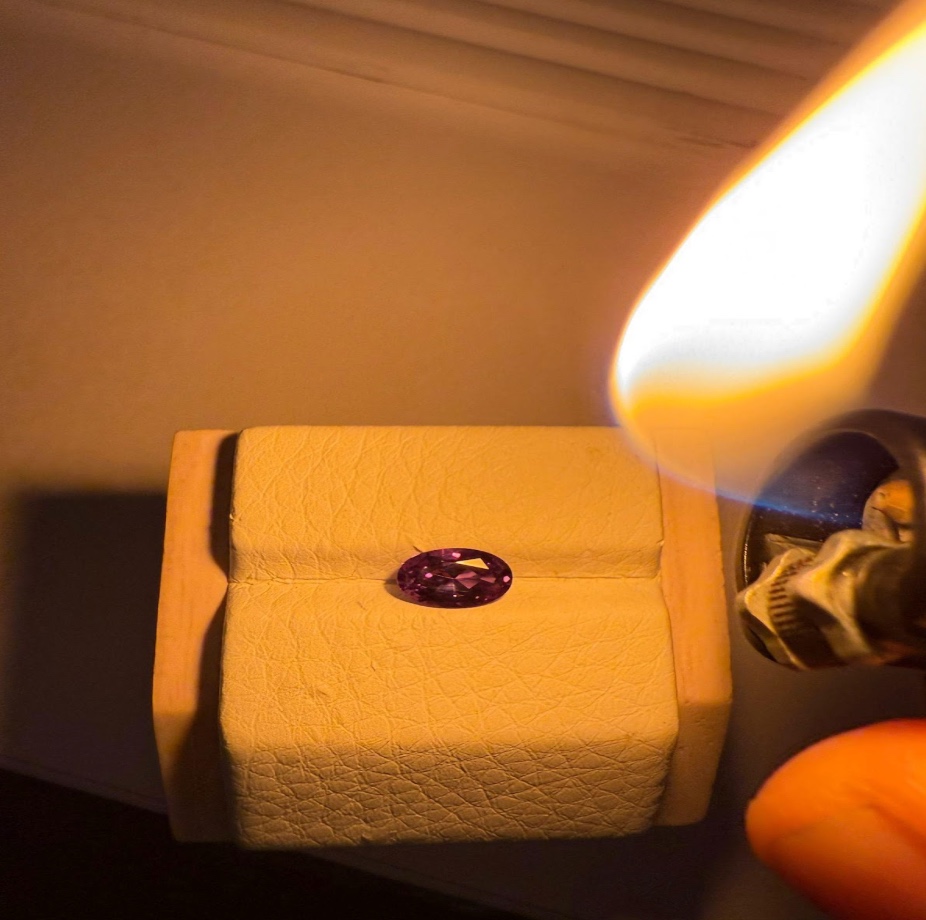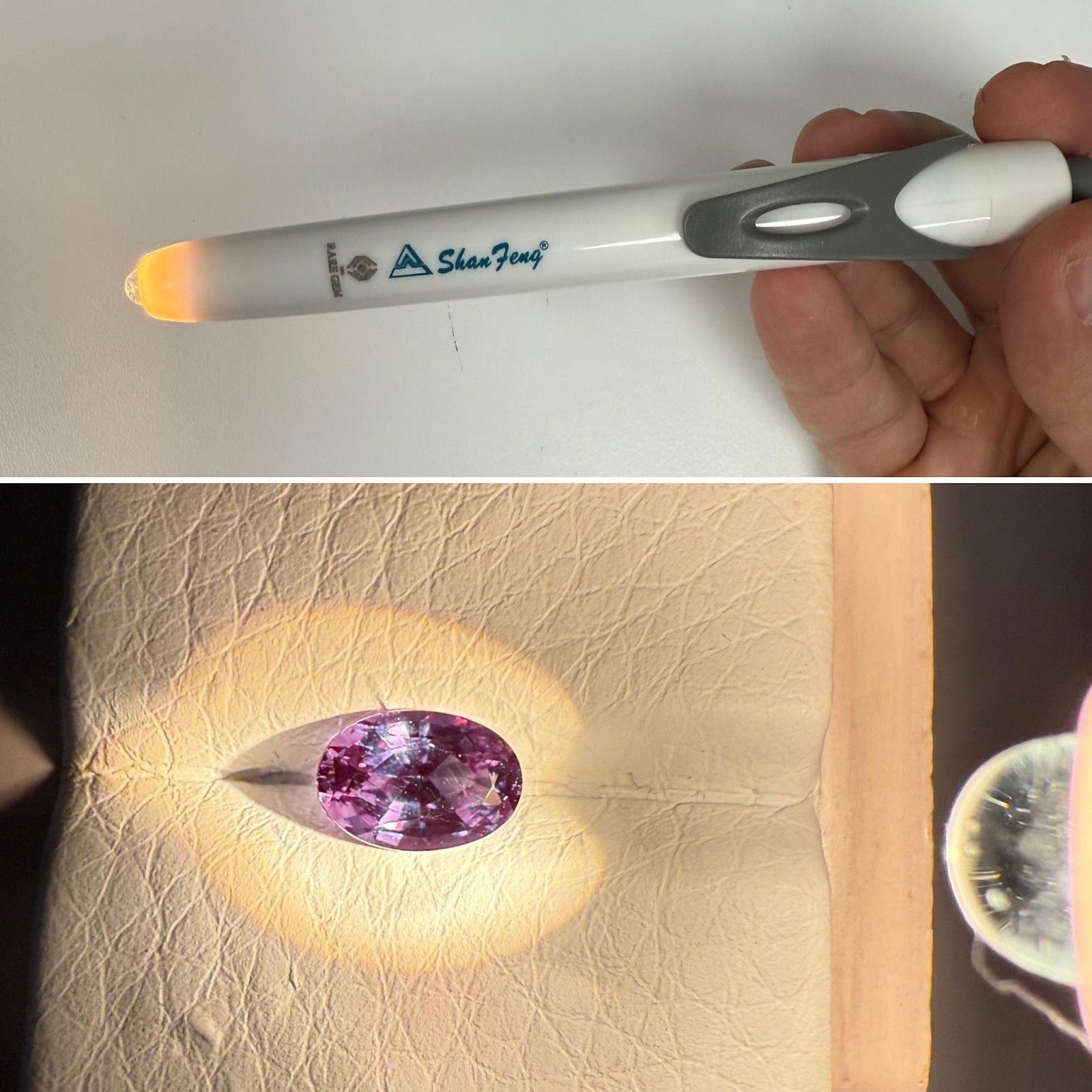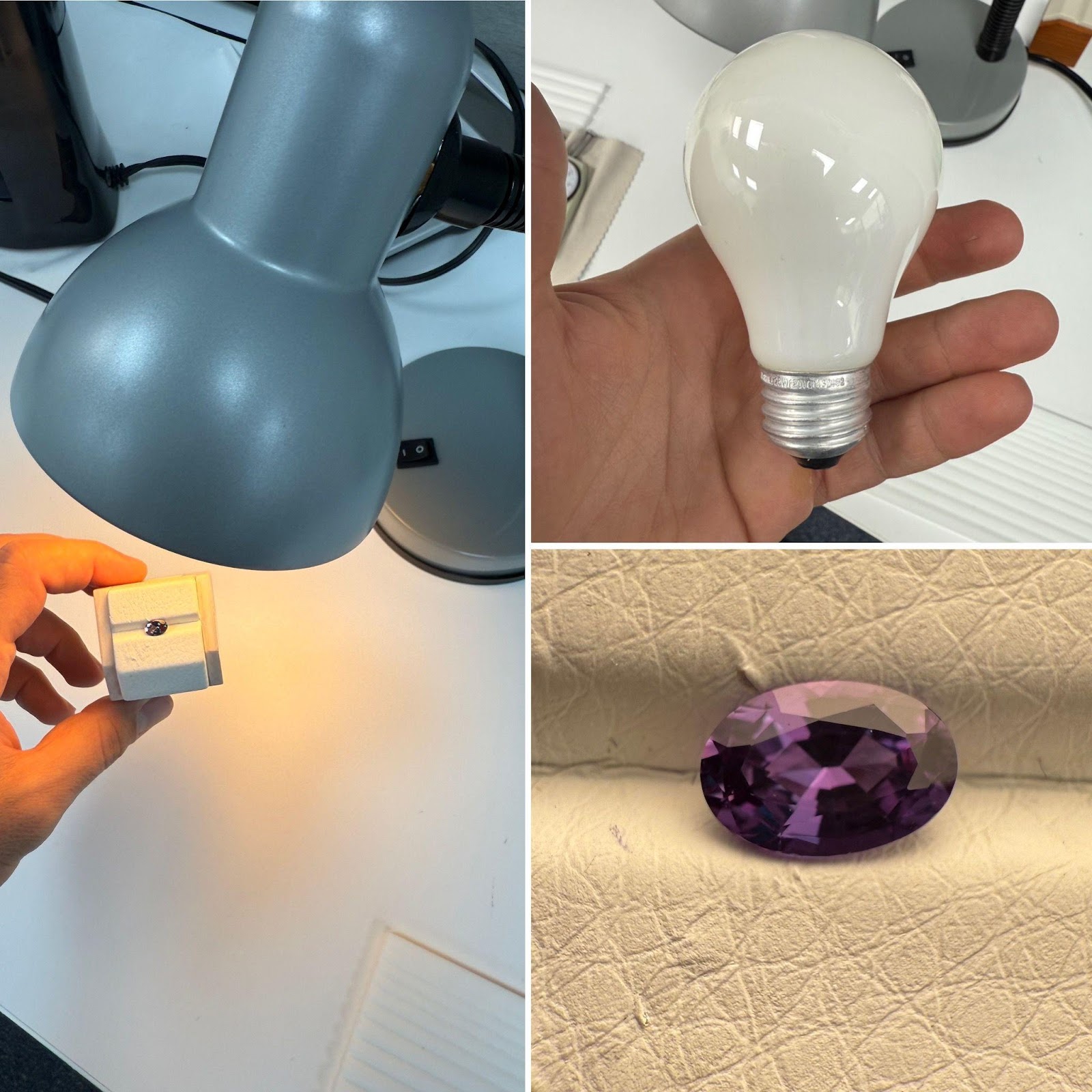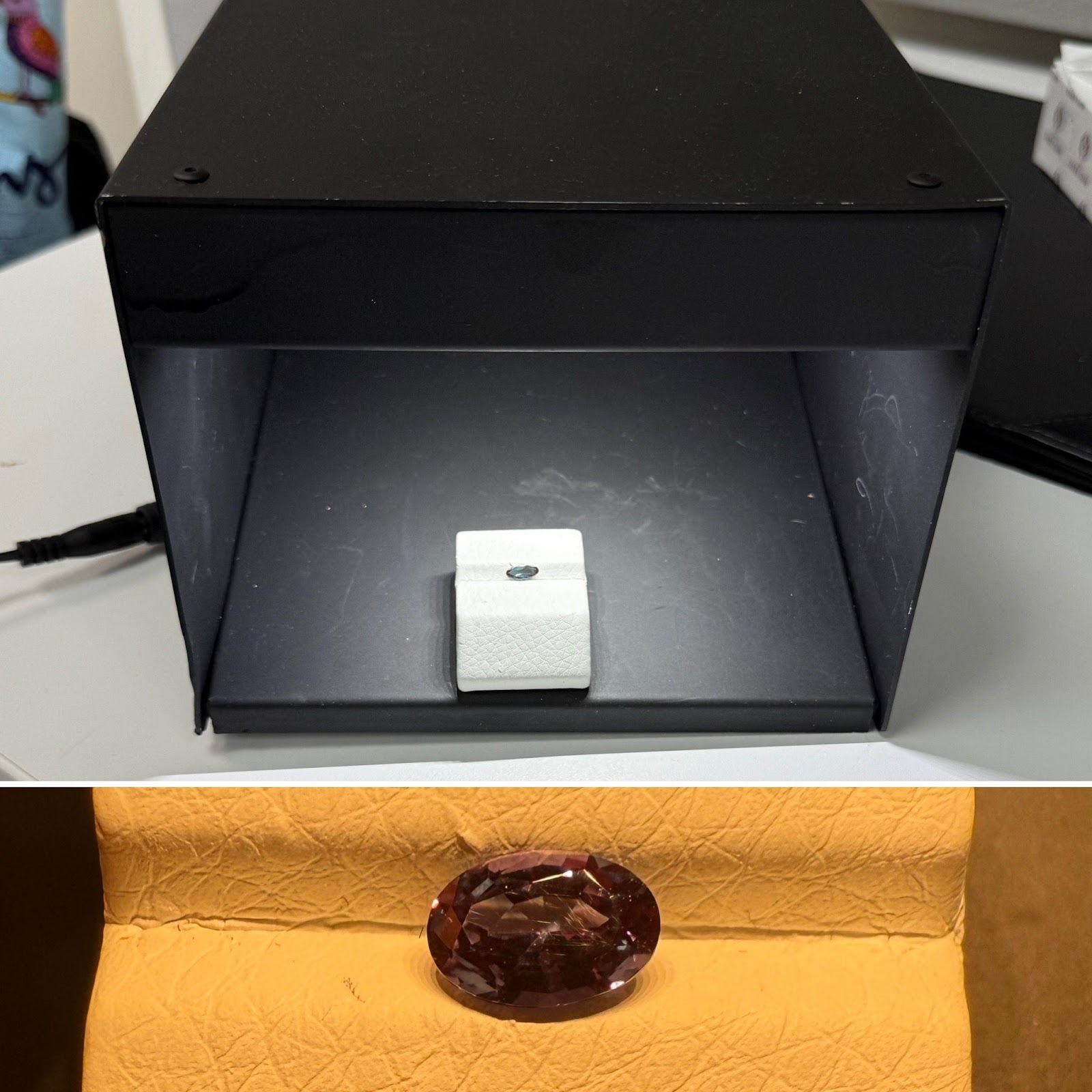Alexandrite is one of the rarest and most fascinating gemstones on Earth, known for its dramatic color change. In natural daylight, it typically shows a bluish-green to green hue, while under incandescent lighting, it shifts to purplish-red or reddish-purple. This phenomenon called the “Alexandrite Effect” is what sets this gem apart from all others. The rarest version of color change manages to leap its way across the color spectrum.
But how do you actually see this color change the right way? Here’s a simple, practical guide for gem lovers, collectors, and curious buyers
Generally speaking, too much light will drown out the color of any gemstone. So when looking at a color changing gemstones, the Laboratory Manual Harmonisation Committee (LMHC) has issued clear guidelines on how Alexandrite should be viewed to evaluate its true color change. These lighting conditions aim to standardize how gem labs and dealers observe Alexandrite:
Kelvin (K) is a unit used to measure color temperature.
For Alexandrite, you need both types of light to properly see what the gem is all about. The color change is what makes it valuable!
This is the oldest known method. Historically, candles were the common method of night time lighting sources. So when it was used in the 1830s, by Finnish mineralogist Nils Gustaf Nordenskiöld, he allegedly mistook Alexandrite for an emerald. While inspecting what he believed to be emeralds that evening, under candlelight, the gem appeared red. The color change was discovered.

A small, handheld incandescent penlight (around 2700K) is a popular method. Shine it directly on the Alexandrite in a dark room to instantly see the color change. We still use this method as it is practical to carry around when traveling and out of the office. This is the optimal method for members of the trade.

Use a standard incandescent bulb (preferably one with a 40–60 watt rating and 2700K color temperature). Avoid LED or fluorescent bulbs for this test, unless they specify a warm Kelvin range. Today, incandescent bulbs are not as common as LED has replaced the standard issue for efficiency and availability. We recommend this method of Alexandrite photography and videography.

We’ve developed a state-of-the-art Alexandrite lightbox that uses precise dual-spectrum LED lights. This tool is compact, energy-efficient, and fits into retail showcases. It switches between cool and warm LEDs to simulate daylight and incandescent lighting on demand. Although the color change is still shown, the maximum appearance of the change will never be as apparent as fire or flame lighting. In the modern era, we are constantly working on better methods to appreciate this uncommon gem. The lightbox is a good choice to get the conversation started for people who never heard of alexandrite. We suggest the lightbox for retail customers.

While lighting is key, the only way to know if you’re looking at real Alexandrite is through a trusted gemological lab like GIA, AGL, GRS, SSEF or member labs of the LMHC. These labs can determine whether the stone is a natural or real genuine Alexandrite.
Even more important is the strength and degree of the color change. Fine Alexandrite shows a bold, full transformation across the spectrum. Stones with a weak shift or overly dark daylight color are less valuable.
Color change is the heart of Alexandrite’s identity. To truly appreciate it, you need the right tools and light sources. From flame to LED, each method helps reveal the magic locked inside the stone.
Looking to explore certified Alexandrites? Browse our curated collection and experience the real Alexandrite Effect yourself.